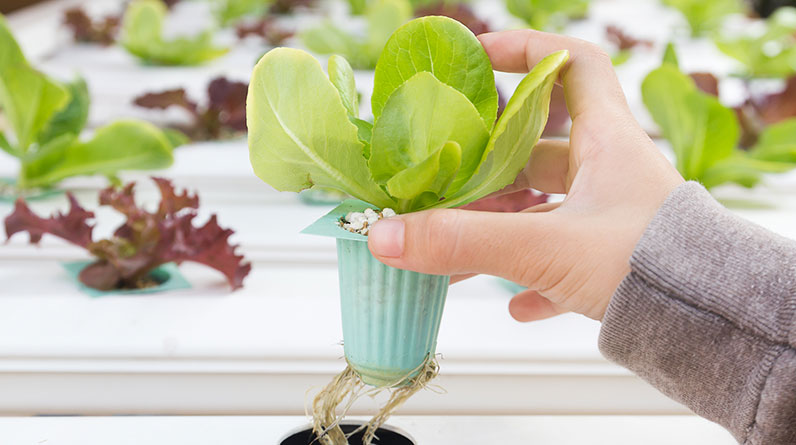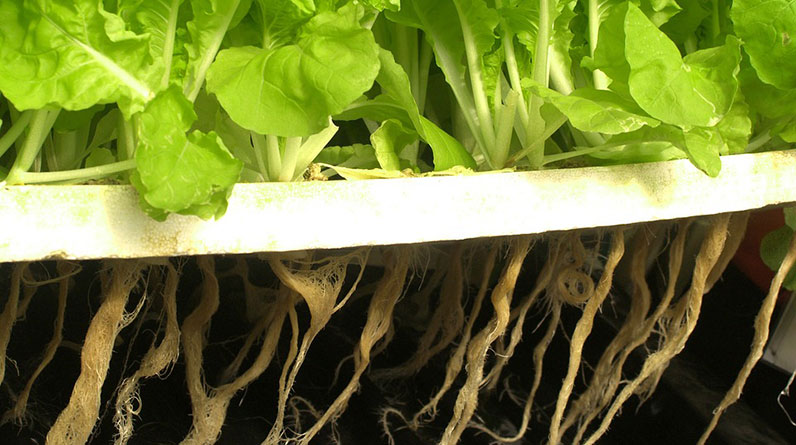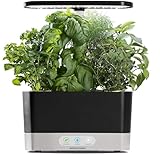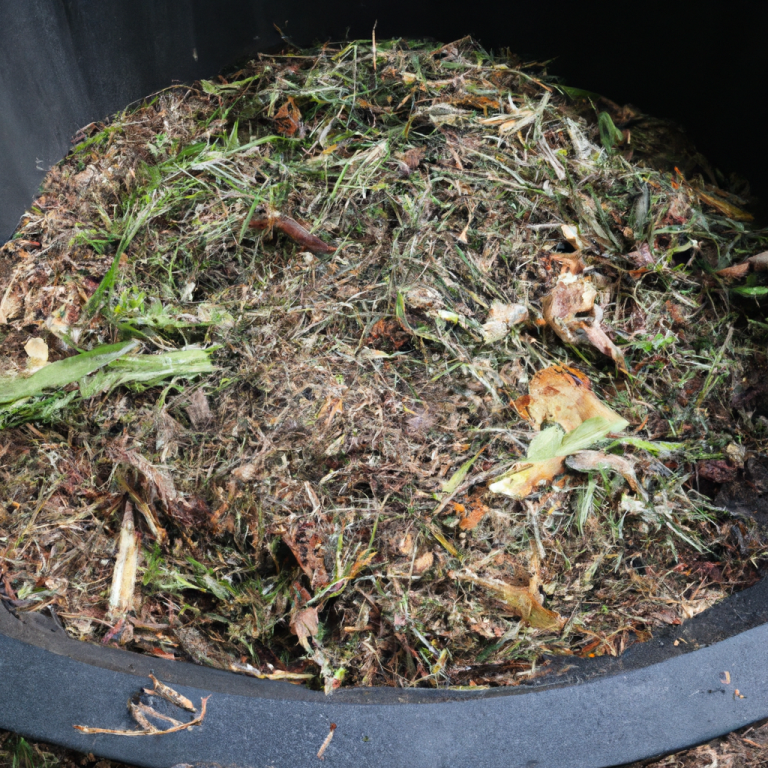What Is Hydroponic Gardening?
Hydroponic Gardening – How to Grow Plants Without Soil
Have you been wanting to grow plants indoors year-round, without needing soil? Hydroponic gardening could be your perfect solution. This growing method works anywhere and requires up to 99% less space than traditional techniques, giving you more room for other projects.
Hydroponic gardens deliver essential nutrients directly to plants through wicking or other means, decreasing water loss due to evaporation and allowing for more efficient nutrient use.
What Materials Are Needed for Hydroponic Gardening?
Hydroponic gardening is an innovative growing technique that allows plants to flourish without soil. Instead, they utilize water and other nutrient-rich solutions for growth. Not only is the process more cost-effective, but it takes up less space than traditional gardening techniques as well.
Successful hydroponic gardening requires the correct materials. This includes a substrate, a water basin, grow lights, and nutrients.
Substrates are hydroponic support materials that form the root system of plants and absorb water, nutrients, and air from a reservoir. Common substrates include clay aggregate, coir peat, perlite, sand, gravel, or wood fiber.
When choosing a hydroponic system, there are numerous substrates to choose from. Make sure the material you select is lightweight, absorbs maximum nutrients, and doesn’t contain any hazardous chemicals.
Depending on the type of hydroponic system you use, an air stone and pump may be required to supply oxygen to plants’ roots. An air stone creates bubbles in the water which distribute oxygen, while a pump pushes those bubbles back up toward plants’ roots.
You’ll also need a water basin that can hold an ample amount of nutrient-rich water. For best results, select black or opaque containers to keep the liquid dark and prevent algae growth.
Hydroponic systems typically require a submersible water pump to transport the water and nutrients from the basin to the tray and growing medium. A timer is another useful piece of equipment, as it allows you to customize watering times and nutrient delivery according to your crop’s specific requirements.
- 2 Growing Modes: 22-Watt LED light of iDOO hydroponics growing system turns on/off automatically, simulate the sunlight spectrum, promoting plants’ photosynthesis in any weather. Vegetables Mode emits blue light, red light, far red light and white light; Flower/Fruit Mode emits red light, far red light and white light.
- 20% Faster than Soil Planting: The integrated low noise pump of indoor herb garden aerates the water to stimulate plant growth while the upper fan simulates the outside breeze at timed intervals. Grow your plants 20% faster than the traditional soil planting method.
- 4.5L Water Tank and Fan: Hydroponics growing system built-in a fan which spreads pollen in florescence, disperses heat in germination. Indepandent 4.5L water tank can support plants to grow for 1-2 weeks in the growth period. A visual window can see how much water in tank.
- Easy-Setup Germination Kit: 3 steps in all to set up the herb garden machine. All the factors needed for plant growth – light, simulated soil are included in the hydroponic growing system.
- This hydroponics growing system kit is an ideal choice to get it for yourself or a perfect Christmas indoor gifts for women mom and dad, birthday gifts for women and men, house warming gifts for new home.It’s suitable for garden enthusiasts, vegan, gardener, chef, farmer, students and kids
Last update on 2025-11-14 / Affiliate links / Images from Amazon Product Advertising API
How Does Hydroponic Gardening Work?
Hydroponic gardening is an alternative growing method that utilizes nutrient-rich water to nurture plant roots. Unlike traditional gardening, the nutrients are dissolved in the water so it’s easier for the plants to access them.
With this method, you can grow herbs and leafy greens year-round indoors without soil. Additionally, this system works great for tomatoes, peppers, and other fruits as well.
When selecting a hydroponic system, there are several different options to choose from. The wick system is the most basic option and requires just a reservoir, tray for plants, and wick connecting the water-nutrient solution.
One type of hydroponic system is the nutrient film technique, which uses plants angled in a tray above a reservoir filled with aerated, nutrient-rich water. A pump circulates this water over the plants for constant access to dissolved nutrients.
A more advanced hydroponic system is aeroponics, which involves planting seeds in a tray and misting them with a nutrient-rich solution. This technique works well but requires specialized pumps and misters for proper functioning; if these fail, your plants’ roots will dry out and die.
No matter the type of hydroponic system you choose, five essential elements remain constant: lighting, water, nutrients, air, and pH balance. Monitoring these variables closely is paramount to having a successful hydroponic garden; keeping everything at optimal levels will guarantee you have an abundant crop every time.
Tips for Successful Hydroponic Gardening
Success with hydroponic gardening starts with understanding your plant’s nutritional requirements. To meet those needs, make sure you purchase the appropriate nutrient-rich fertilizer in both liquid and powder form; the one that works best for the crops you intend to grow should then be chosen as your go-to choice.
Another essential aspect of hydroponic gardening is testing and adjusting the pH level of your water solution. Too high a pH can hinder your plants’ growth, while too low can even kill them. Use a pH strip or meter to check your nutrient solution’s pH level and make necessary changes as needed.
It is essential to know the ideal water temperature for each plant, which should range between 68 and 72 degrees F. This ensures the roots receive enough oxygen for optimal health.
Maintain a regular water change schedule, taking out excess water from your reservoir and replacing it as necessary. This is especially crucial if you have a drip system installed.
Regular water changes can help avoid clogging, which restricts nutrient flow and negatively impacts your plants. A good rule of thumb is to change your water every two weeks.
Hydroponic gardening has the advantage of not requiring soil, making it environmentally friendly and reducing land pollution. This makes it a great option for those with limited outdoor space for organic gardens. Furthermore, you’ll save on fertilizers and pesticides too!
- High planting efficiency: Start an indoor herb garden with the Ahopegarden hydroponic growing system, which includes a water reservoir, an overhead LED grow light, and a circulation system that keeps the water fresh. The hydroponic setup and lighting systems allow plants to grow up to faster and healthier in controlled conditions. Simply add plant seeds, water, and nutrients to the reservoir and watch the plants grow
- 10 Pods & Water Level Window Included: This indoor grow kit with light offers 10 growing stations, The reservoir of our hydroponic vegetable garden kit also comes with a see-through water level window, so with a glance, you can see how much water is in the reservoir and when it’s time to add more water.
- 2 Growing Modes for Veggies, Fruits & Flowers: The grow light of our indoor veggie growing system features full-spectrum lamps that simulate natural sunlight, and you can choose between two different light modes (vegetables or flowers&fruit ) based on what you are growing, blue for vegetables and red for fruit. Flowers also can be grown in this indoor plant grower system
- 14.5 Inches Height-Adjustable Light Post: Our harvest indoor hydroponic garden comes with a bright grow light that can be adjusted in height as the plants grow taller. Plants can grow up to 14.5 inches. What’s more, the grow lights are on a 16-hours-on, 8-hours-off timer. So with an automatic light timer, there’s really not much you have to do to get your plants growing u
- Perfect for Family: This indoor garden plant germination kit is an ideal for families on Christmas and other holidays. This hydroponic growing kit is small enough to fit on the counter in the kitchen, which allows users to grow and vegetables indoors year-round. This indoor planter with grow light really is the that keeps on giving
Last update on 2025-11-14 / Affiliate links / Images from Amazon Product Advertising API
Cost Considerations for Hydroponic Gardening
Hydroponic gardening can be a cost-effective, time-saving alternative to traditional soil-based garden methods. It requires significantly less water usage and utilizes liquid nutrients and pH adjusters instead of fertilizer, soil, and mulch.
Furthermore, the nutrient solution can be recirculated multiple times before being discarded, further conserving water. This allows us to save over 90% of the water that would otherwise be lost through evaporation and other traditional gardening methods.
Hydroponic gardening comes with its own set of costs, and many factors must be taken into account before opting for this growing method. These include land, buildings, and equipment as well as staff training and quality assurance measures.
Although a small hydroponic system may be cost-effective, larger and more complex ones can run up to tens of thousands of dollars or more. These advanced setups typically feature larger reservoirs, powerful water pumps, longer pipes, and hoses, as well as extra durable components in general.
Hydroponic farmers must factor in the costs of land and building materials as well as electrical power when planning their startup costs. While these expenses may differ based on local conditions, these should never be underestimated when creating a viable hydroponic business plan.
Hydroponic farms require a significant amount of environmental safeguards and training, such as soil testing, organic certification, green energy infrastructure, and other measures to protect the environment. Although these measures may be expensive to implement, they are essential for the long-term viability of the hydroponic industry.
Despite these costs, the rewards can be immense. Hydroponic gardens typically produce more crops and faster plant growth than soil-based gardens, leading to larger harvests overall.
Challenges of Hydroponic Gardening
Hydroponic farming can be an excellent option for growing fresh food, particularly in drought-prone regions. However, the process isn’t without its challenges.
One of the primary challenges hydroponic growers face is keeping their systems clean. To do this effectively, they must regularly flush their system and change out the nutrient solution. Neglecting to do these tasks on a regular basis can lead to clogs, unpleasant odors, and plant damage if left undone.
Algae growth is another common issue, depriving plants of oxygen and leading to root rot. Algae can also clog and damage parts of your hydroponic system.
To prevent this problem, create a clean and sterile environment for your plants by eliminating weeds in the soil, keeping it properly insulated, as well as keeping the temperature appropriate for growth.
Without proper sanitation, fungus, and bacteria can easily take hold of your garden. These diseases can wreak havoc on your crops, even leading to their death; so it’s essential that you maintain a clean and sterile environment at all times.
Finally, it is important to be familiar with the laws related to hydroponic gardening. These include federal and state rules which control water use, uncontrolled releases, and food safety.
While these obstacles may appear daunting at first, they are actually manageable if you take them seriously and are willing to put in the time and effort needed for success. Once your systems are in place, you’ll discover that hydroponic gardening is a rewarding and enjoyable hobby.
Growing plants is usually a challenge. Hydroponic systems make growing herbs and leafy greens much easier, though some more challenging crops can also be grown this way.
Getting Started with Indoor Hydroponic Gardening

The Benefits of Indoor Hydroponic Gardening
Indoor hydroponic garden systems use nutrient-rich water instead of soil to grow fresh fruits, herbs, and veggies. They’re easy to care for and produce impressive yields.
With no soil for weeds to grow or pests to take over, you can rest assured that your crops are healthy and free from disease.
- GROW INDOORS ALL YEAR: Grow a variety of leafy greens, herbs, vegetables, fruiting plants, and flowers. Low-pressure aeroponics allows for faster plant growth and better nutrient absorption for healthier plants. High quality plastics made from PC-ABS and HDPE, food safe and won’t break or break down over time, preventing microplastics from contaminating your food. Assisted automation allows you to learn how to maintain and manage the system. Germination should be done outside of the system.
- DESIGNED FOR HIGH-YIELD: The system is designed to deliver maximum yield, allowing your plants to fully express themselves. The plant spacing has been engineered to allow for large plants to grow. The side-mounted lights ensure the plants receive light from top to bottom. Light exposure from the six light bars gives the plants 360 degree light exposure. The root zone is contained in the modular vertical pole, and allows the plant’s roots to grow to their greatest potential.
- DESIGNED BY GARDENERS, FOR GARDENERS: We designed the Aerospring to be the most usable hydroponic system. Easy access to the water reservoir for water management. The 20 gallon reservoir, the largest in its class, requires less frequent refilling. Easily detachable internal hose for draining/changing water. The vertical pole is easy to disassemble for cleaning and reassembly, and dishwasher safe. Plastics are opaque, preventing algae from growing inside. The wheelbase allows for easy movement.
- QUALITY COMPONENTS: Full-spectrum, professional grow lights, highly efficient at 2.05 (umol/J), light intensity at 367 PPFD (μmol/m2/s) at 8in, CRI >90, CCT = 4000k, estimated lifespan 50,000 hrs, for all stages of plant growth. Sicce Syncra Silent 1.5 pump, with a 3+2 year manufacturer’s warranty. Oxford D600 tent material, with highly reflective interior panels, prevents light seepage, keeping your living space dark. Aerospring systems are manufactured in Singapore to strict quality assurance.
- SUPPORT & COMMUNITY: We pride ourselves on supporting growers. Our mission as a small, hands-on company is to empower people to take back control over their food – to reconnect with it and truly experience the joy of growing their own food, right at home. We are ourselves growers and urban farmers, and we want to pass on our positive experiences and knowledge to you. Aerospring owners get exclusive access to our online community, for growing tips, grow guides, troubleshooting and guidance.
Last update on 2025-11-14 / Affiliate links / Images from Amazon Product Advertising API
Understanding Hydroponic Gardening
Indoor hydroponic gardening is the practice of growing plants without soil, using only mineral nutrient solutions and water. This technique is more efficient than traditional gardening methods since plants absorb essential nutrients from their surroundings in the nutrient solution, leading to faster growth rates and greater productivity.
Hydroponic farming is also more eco-friendly than conventional farming, as it requires less water to cultivate plants in a hydroponic garden. This makes it an ideal option for home gardeners looking to reduce their water bill.
Hydroponic gardens use precise control and regulation to maximize yields by providing plants with the correct amount of water, sunlight, carbon dioxide, and nutrients they require for healthy growth. This system ensures that every plant gets exactly what it needs in order to thrive.
Another great advantage of this type of gardening is that it can be used in difficult-to-cultivate areas. This makes it ideal for farmers working in restricted or polluted soil, and those who live in remote places that are hard to access by trucks or other transport.
Many have discovered that hydroponic gardens offer greater control of pH, CO2, heat, air movement, nutrient supply, water requirements, and lighting schemes than traditional soil-based cultivation. This allows them to optimize their crop production and boost profits at the same time.
No matter your level of knowledge about indoor hydroponic gardening, the internet offers plenty of useful advice. From tips for getting started to comprehensive guides for creating your system, there’s no lack of online resources that will help you cultivate the ideal hydroponic garden.
Planning Your Hydroponic Garden
Hydroponic gardens are an ideal solution for those who wish to cultivate vegetables, herbs, or other plants indoors. Setting one up is simple and takes up minimal space – perfect!
It’s also beneficial for the environment, using less land than conventional gardens and not emitting toxic fumes into nearby air and soil.
To make your indoor hydroponic garden a success, it’s essential that you take time to plan it out. Consider your budget, space limitations, and which plants you would like to grow before making any decisions.
When creating your hydroponic garden, it’s important to factor in how much time you have available for upkeep. Be sure to monitor factors like a nutrient solution, oxygen level, temperature, and lighting regularly in order to avoid premature plant death.
The next step in planning an indoor hydroponic garden is selecting the appropriate equipment. You have two options: purchase pre-made systems or construct one yourself.
A common hydroponic system is the wick hydroponic one, which utilizes a reservoir or tray and cotton wick that runs up into pots containing your plants’ roots. You add nutrient solution to the top of the reservoir or tray and it slowly seeps down through your plants as they require it.
Another popular option is an ebb and flow system, which brings together the advantages of deep water culture and wick hydroponics. A plastic bottle reservoir holds the nutrient solution while wicks extend up into pots filled with plants’ root systems.
Drip irrigation systems are another option for watering your plants. This method is more efficient than other approaches since each plant gets its own individual irrigation, rather than doing it all at once. Plus, this solution is environmentally friendly since it saves both water and energy costs.
- INDOOR GARDENING MADE EASY: Enjoy abundant harvests year round with the AeroGarden Harvest, an indoor hydroponic gardening system that grows your favorite vegetables, herbs, or flowers in water without the mess of soil
- ROOM FOR 6 PLANTS: This compact countertop garden features a spacious grow deck and water bowl so you can grow 6 different live plants at once, all up to 12 inches tall
- HIGH-PERFORMANCE GROW LIGHT: The full spectrum 20W LED grow light with an automatic on/off timer mimics natural sunlight to help plants germinate up to 5x faster than in soil
- FEATURES AND BENEFITS: Our indoor garden’s touch-sensitive illuminated control panel reminds you when to add water and plant food, making for a simplified, worry-free gardening experience
- WHAT’S INCLUDED: The AeroGarden Harvest comes with a 20W LED grow light system, power adapter, one 3 oz. bottle of liquid plant food, and the Gourmet Herb Seed Pod Kit featuring Genovese Basil, Curly Parsley, Dill, Thyme, Thai Basil, and Mint
Last update on 2025-11-14 / Affiliate links / Images from Amazon Product Advertising API
Selecting the Right Equipment for Hydroponic Gardening
Hydroponic systems require a reservoir, which stores the water necessary to supply plants with nutrients. This can be either an individual plastic container or a larger tank designed specifically for hydroponics. The container should have a lid to prevent water loss or rain damage.
Another essential aspect of hydroponic systems is an aeration system. This involves adding a pump and air stone to the water in order to provide oxygenated water to your plants’ roots.
These can be found at most gardening supply stores. It is particularly important to use high-quality aerators that provide adequate airflow for your plants.
Maintaining your aerators is essential to prevent bacteria and other pollutants from damaging your plants. For optimal effectiveness, change them at least once every 18 months or so.
Your choice of aerator depends on your crop and its root size. For instance, small plants with long roots may need more air than those with shorter roots.
It’s essential to use quality fertilizer for your plants in order to give them the nourishment they require. A fertilizer designed specifically for hydroponic use will work effectively on your crops, but you must follow the directions on the label in order to use it correctly.
Finally, your hydroponic system requires lighting that will provide enough illumination for your plants to flourish. Most edible plants need at least six hours of daylight per day; therefore, opt for T5 or metal halide bulbs as your lighting source.
Choosing the Right Plants
Hydroponic systems are ideal for growing hearty, fast-growing vegetables. These seeds require little care and can produce excellent yields with minimal input.
Hydroponic gardening is popular for tomatoes, peppers, beans, and strawberries – which can be grown in either solution or aggregate culture systems.
Tomatoes have long been a favorite of hydroponic hobbyists and commercial growers due to their ease of cultivation, versatility, and abundant fruit production. Plus, tomatoes require minimal light requirements – perfect for indoor growing!
Bell peppers make excellent hydroponic plants. They thrive in deep water culture or ebb-and-flow systems and can be harvested between 3 – 8 weeks depending on variety and climate conditions.
Beans are an incredibly productive crop that can be grown using various methods, such as wick set-up and aeroponic systems. Green beans, lima beans, pinto beans, and pole beans all do well in hydroponic gardens; they just need something to support them like a trellis or A-frame for support.
Cucumbers, a commonly vining plant, make for an excellent hydroponic garden choice. There is a wide range of cucumber varieties to choose from thick-skinned American slicers to long and seedless European types and smooth Lebanese cucumbers.
Maximizing Light and Temperature Conditions
Hydroponic indoor gardening offers greater environmental control, allowing growers to adjust nutrient levels and light intensity throughout the growing season. This leads to higher yields for various crops such as leafy greens like lettuce.
Another advantage of hydroponic farming is that it reduces pest infestations. This is because soil-borne diseases do not exist in a hydroponic garden, but you still need to be diligent about maintaining cleanliness within your indoor hydroponic system in order to prevent disease spread.
You must pay careful attention to the quality of light your plants receive, as it has an immense effect on how well they grow. Choose a light that provides photosynthetic active radiation (PAR), which measures how much usable energy in photons from that spectrum is available to convert sunlight into useful energy for plants.
The ideal indoor lights are usually full-spectrum, featuring a blend of red and blue wavelengths. This provides plants with sufficient energy for photosynthesis and encourages early growth.
Additionally, ensure the temperature of the solution remains optimal for your chosen crop. While this may be more challenging in colder climates, maintaining optimal water temperatures is a crucial step in hydroponic gardening success.
Finally, when planting your plants in a hydroponic system, the type of seed pod they will receive is important as this can have an impact on their health. Different brands use various seed pods and some are better suited to certain types of plants than others.
Our Conclusion
Hydroponic gardening offers many advantages, such as growing a wide selection of tender greens, root vegetables, and fruit without the need for irrigation or pesticides – two issues that are increasingly pressing in today’s world. Furthermore, it saves people on water and food costs which are becoming increasingly problematic.











